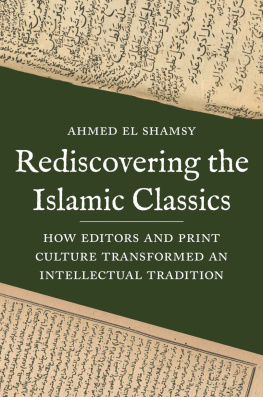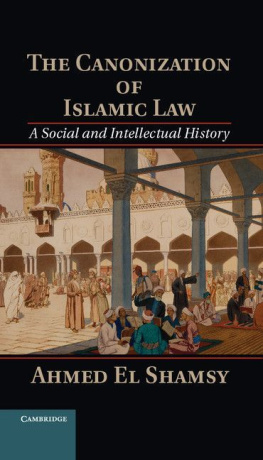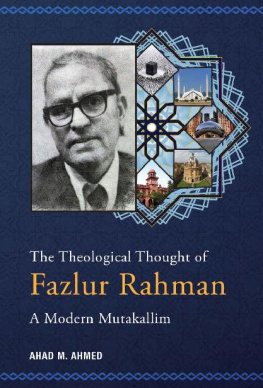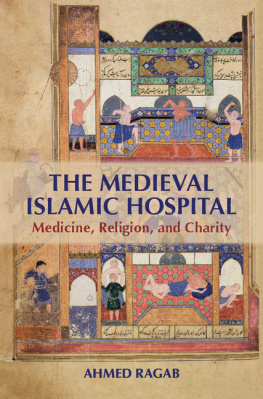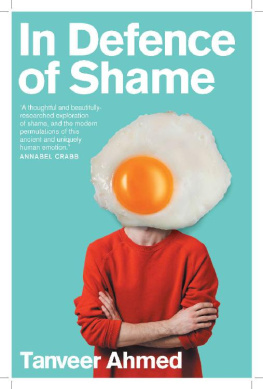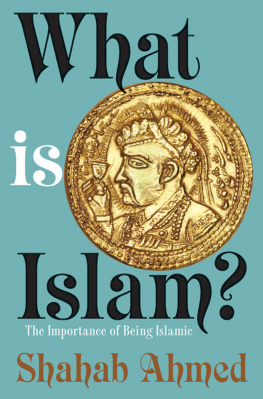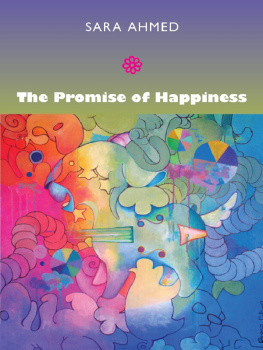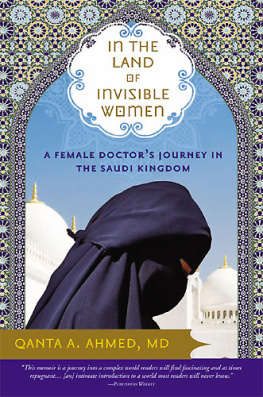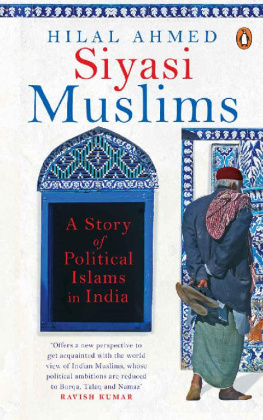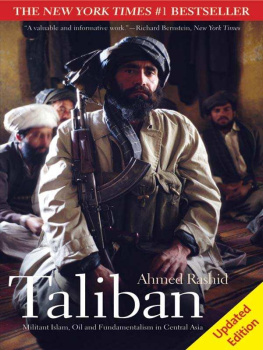Ahmed El Shamsy - Rediscovering the Islamic Classics
Here you can read online Ahmed El Shamsy - Rediscovering the Islamic Classics full text of the book (entire story) in english for free. Download pdf and epub, get meaning, cover and reviews about this ebook. year: 2020, publisher: Princeton University Press, genre: Religion. Description of the work, (preface) as well as reviews are available. Best literature library LitArk.com created for fans of good reading and offers a wide selection of genres:
Romance novel
Science fiction
Adventure
Detective
Science
History
Home and family
Prose
Art
Politics
Computer
Non-fiction
Religion
Business
Children
Humor
Choose a favorite category and find really read worthwhile books. Enjoy immersion in the world of imagination, feel the emotions of the characters or learn something new for yourself, make an fascinating discovery.
- Book:Rediscovering the Islamic Classics
- Author:
- Publisher:Princeton University Press
- Genre:
- Year:2020
- Rating:4 / 5
- Favourites:Add to favourites
- Your mark:
- 80
- 1
- 2
- 3
- 4
- 5
Rediscovering the Islamic Classics: summary, description and annotation
We offer to read an annotation, description, summary or preface (depends on what the author of the book "Rediscovering the Islamic Classics" wrote himself). If you haven't found the necessary information about the book — write in the comments, we will try to find it.
Rediscovering the Islamic Classics — read online for free the complete book (whole text) full work
Below is the text of the book, divided by pages. System saving the place of the last page read, allows you to conveniently read the book "Rediscovering the Islamic Classics" online for free, without having to search again every time where you left off. Put a bookmark, and you can go to the page where you finished reading at any time.
Font size:
Interval:
Bookmark:
Rediscovering the Islamic Classics
Rediscovering the Islamic Classics

HOW EDITORS AND PRINT CULTURE TRANSFORMED AN INTELLECTUAL TRADITION
Ahmed El Shamsy
PRINCETON UNIVERSITY PRESS
PRINCETON AND OXFORD
Copyright 2020 by Princeton University Press
Requests for permission to reproduce material from this work should be sent to permissions@press.princeton.edu
Published by Princeton University Press
41 William Street, Princeton, New Jersey 08540
6 Oxford Street, Woodstock, Oxfordshire OX20 1TR
press.princeton.edu
All Rights Reserved
Library of Congress Cataloging-in-Publication Data
Names: El Shamsy, Ahmed, 1976 author.
Title: Rediscovering the Islamic classics : how editors and print culture transformed an intellectual tradition / Ahmed El Shamsy.
Description: Princeton, NJ : Princeton University Press, 2020. | Includes bibliographical references and index.
Identifiers: LCCN 2019028879 (print) | LCCN 2019028880 (ebook) | ISBN 9780691174563 (hardback) | ISBN 9780691201245 (ebook)
Subjects: LCSH: Publishers and publishingEgyptCairoHistory. | Islamic literaturePublishingEgyptCairoHistory. | EditorsEgyptCairoHistory. | Book collectorsEgyptCairoHistory.
Classification: LCC Z466.E486 C354 2020 (print) | LCC Z466.E486 (ebook) | DDC 070.50962/16dc23
LC record available at https://lccn.loc.gov/2019028879
LC ebook record available at https://lccn.loc.gov/2019028880
Version 1.0
British Library Cataloging-in-Publication Data is available
Editorial: Fred Appel and Jenny Tan
Production Editorial: Natalie Baan
Text Design: Leslie Flis
Jacket Design: Layla Mac Rory
Jacket Image: Folio from Kitb Tajrd al-inya by Ibn al-Lam (d. 803/1400 or 1401), copied in 1447 (courtesy of Leipzig University Library); page from Shar al-Haytam al Bfal al-aram by al-Haytam (d. 974/1566), printed in 1892 (photo by author).
For Hanna

Dear reader, these are the deficient wares peddled to you by the author; this is his understanding and his mind, laid out before you. Yours is the benefit, while the toil is the authors; yours is the fruit, his the cost. So, even if he does not earn your praise or gratitude, do not deprive him of your forgiveness and excuses. And if you refuse even that and find only faultso be it!
Ibn Qayyim al-Jawziyya (d. 751/1350), arq al-hijratayn
- xi
- xiii
My writing of this book was made possible by two yearlong sabbaticals, the first in 201415 at the Zentrum Moderner Orient (now Leibniz Zentrum Moderner Orient) in Berlin with funding from the Volkswagen Foundation, and the second in 201718 at Harvard Law Schools Islamic Legal Studies Program: SHARIASource (now the Program in Islamic Law). I am grateful to the director of the ZMO, Ulrike Freitag, and the director of the Program in Islamic Law, Intisar Rabb, for their generous welcome and their support of my research.
Back home at the University of Chicago, I have benefited from the insights and friendship of my colleagues and students in the Department of Near Eastern Languages and Civilizations. I would especially like to thank the students in my Islamic Classics and the Printing Press and Critical Arabic Philology seminars for their close reading of several key texts with me. I have had the chance to present aspects of my research in numerous conferences, workshops, and lectures, and I am thankful for the comments and suggestions I have received on these occasions. In particular, the workshop on Islamic print culture that I organized at the ZMO in May 2015 and the conference on Islamicate book history organized by Maribel Fierro, Sabine Schmidtke, and Sarah Stroumsa in March 2015 provided opportunities for illuminating discussions on aspects of my project.
Over the years, countless exchanges with colleagues near and far have helped me refine the arguments and check the evidence presented in the following pages (even when said colleagues vehemently disagree with me), and I am immensely grateful for the generosity with which they have shared their time and knowledge. They include Rodrigo Adem, Murteza Bedir, Jonathan Brown, Michael Cooperson, Garrett Davidson, Mohammad Fadel, Frank Griffel, Bernard Haykel, Konrad Hirschler, Matthew Ingalls, Wadad Kadi, Ahmad Khan, Henri Lauzire, Jennifer London, Matthew Melvin-Koushki, Adam Mestyan, Roy Mottahedeh, Elias Muhanna, Najah Nadi, Avigail Noy, Bilal Orfali, Maurice Pomerantz, Jawad Qureshi, Umar (Amr) Ryad, Muhammad Yusri Salama, Walid Saleh, Saud al-Sarhan, Kathryn Schwartz, Fihr Shakir, Himmet Taskomur, Amir Toft, Josef van Ess, Paul Walker, Robert Wisnovsky, Jan Just Witkam, Kyle Wynter-Stoner, Muhammad Qasim Zaman, and Aron Zysow. As always, Hanna Siurua was the first audience for all ideas in this book, and I thank her for the endless patience with which she helped me improve them. Finally, I harbor the fond hope that our daughters, Maya and Minna, will deem the rewards of our travels for this book worth the accompanying upheaval.
Rediscovering the Islamic Classics
It was the late summer of my second year in graduate school, and my train was speeding away from the urban moloch of Cairo toward Alexandria on the Mediterranean coast, cutting through the Nile delta, whose lush greenery was sprinkled with the white of the first cotton buds of the season. I was taking some time off from the neatly printed books of Harvards Widener Library to explore Arabic manuscripts at the Egyptian National Library in Cairo. After it had closed for the day, I had spent a few hours book shopping around the Azhar mosque, one of the oldest still functioning institutions of learning in the world, and was now on my way back to my temporary home.
I was exhausted and had clearly gotten too much sun, but I was making an effort to review the notes I had taken that day. My haphazard stabs at the National Librarys large manuscript collection, at the time housed in a dingy concrete block in Cairos Bulaq district, had yielded a surprising find: a work on Islamic law, written 1,200 years earlier by an Egyptian named Ab Yaqb al-Buway, which recent academic publications had declared extinct. Sitting at the microfilm reader that morning (the library did not allow access to the manuscript itself) and realizing what I was looking at, I had scrolled frantically through the text, scribbling notes as I went. The work appeared to be a complete treatment of the principal areas of Islamic law, and it included a methodological discussion on how to read and interpret scriptureone of the oldest such discussions to be found. I had immediately requested a copy of the manuscript, but this would not be ready until the following week, so for now all I had were my hastily jotted notes. The last thing I had written in my notebook was the name of the copyista certain Abd al-Raf from Kazan, the Tartar Muslim city on the Volga Riverand the year in which the manuscript had been copied: 1325. That year fell in the Mamluk period, when Egypt and Syria were the intellectual centers of the Muslim world. But revisiting my notes, I frowned: why had I written only 1325, without its Hijri counterpart? The Islamic Hijri calendar is more than six centuries behind the Gregorian calendar, though the gap shrinks by about eleven days each year, as the Hijri calendar tracks lunar rather than solar years. When I wrote down the date, I reasoned, I must have automatically converted it into its Gregorian equivalent, but why had I not made a note of the original Hijri date also? I was too worn out to ruminate on the matter further that day, but when I awoke the following day with my headache gone, the answer struck me: 1325 was not the Common Era date; it was the Hijri date. This meant that the manuscript of al-Buways book had been copied as recently as in 1907 CE. No wonder I had, in my groggy exhaustion after a long day of work, misread my own notes. Why would a hugely important work have been copied by hand in the twentieth century, even as it remained unknown in the published literature?
Font size:
Interval:
Bookmark:
Similar books «Rediscovering the Islamic Classics»
Look at similar books to Rediscovering the Islamic Classics. We have selected literature similar in name and meaning in the hope of providing readers with more options to find new, interesting, not yet read works.
Discussion, reviews of the book Rediscovering the Islamic Classics and just readers' own opinions. Leave your comments, write what you think about the work, its meaning or the main characters. Specify what exactly you liked and what you didn't like, and why you think so.

